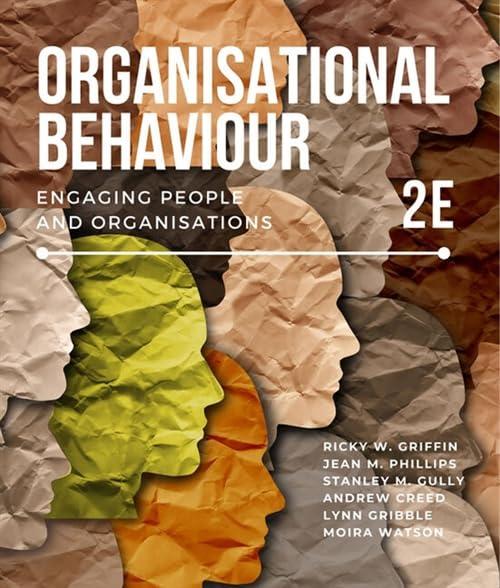Similarities depend on your differences An ABC Life article highlights the issue of similarity bias in the
Question:
Similarities depend on your differences An ABC Life article highlights the issue of similarity bias in the workplace. It defines the phenomenon as the tendency for us to show preference towards people who are similar to us.95 This can be conscious or more often unconscious, but the effects are real, regardless. Similarity bias can be a problem when it comes to hiring staff, for example, and the experience of a skilled and experienced, small-statured woman of Asian heritage is described, wherein she enters a Sydney boardroom to be interviewed for a job. There she discovers the whole interview panel is composed of tall, Caucasian men. An overwhelming sense of difference accompanied this experience and the possibility of similarity bias loomed large. It would be natural that all these men would prefer to hire another, similar man rather than this quite different, though highly capable woman of a different racial background. Differences of all types can form the basis of similarity bias. Age, physical and cognitive ability, and sexual preference, in addition to gender, race and ethnicity, are well-known points of difference that can be the subject of prejudice and bias. Some research cited in the article suggests up to 78 per cent of recruitment decisions by Australian organisations may be subject to factors associated with similarity bias. On the positive side, there are some strategies that can help to avoid the unethical and often illegal similarity bias from infiltrating an organisation’s recruitment process. Strategies, some for the applicant and some for the hiring organisation, include:
• Do some research about the organisation you are targeting for a job. Websites, pictures, reports and PR news items can all give insights about the composition of the organisation. One positive sign would be if they were included on the Workplace Gender Equality Agency’s Employer of Choice list.
• Focus on your capabilities and your own narrative around your skills. Target your CV to the job itself and do not include unnecessary information about everything you have ever done.
• De-emphasise features that might provoke conscious or unconscious similarity bias. Remove information from your application that might elicit unconscious bias (age, ethnicity, sexual preferences and the like are irrelevant).
• Focus on strengths associated with your differences.
Alternative perspectives come with differences.
Knowledge of the other can be powerful in a work context. You could be a source of strength and advantage for the prospective employer based on your points of difference.
• Understand your rights and be aware of diversity targets that may be applicable. If you know they need a certain quota of the kind of person you represent, that is an advantage. If you find genuine discrimination occurs, there may be the opportunity to overcome bias, re-educate the panel or leverage your advantage from that situation.
• Organisations should ensure diversity is represented on their selection panels.
• Properly trained recruitment and selection staff in the organisation can better understand the potential for similarity bias in the process.
Questions:
Mainstream
1. What would be some benefits to an organisation if it was listed as a Workplace Gender Equality Agency Employer of Choice?
2. Being similar to someone else is natural and unavoidable, so what are the reasons our similarities can be perceived poorly in a workplace context?
Critical
1. Organisations should pursue diversity for many reasons. One very practical reason is that inclusion and diversity can often lead to improved business performance. Referring to issues mentioned in this case, discuss how an organisation, by minimising similarity bias in its recruitment process, could contribute to its own performance improvement.
2. If it is helpful to know your rights under the legislation that prohibits discrimination, why wouldn’t you just threaten litigation each time you are interviewed for a job and are not selected due to what you see as similarity bias?
Step by Step Answer:

Organisational Behaviour Engaging People And Organisations
ISBN: 272389
2nd Edition
Authors: Ricky W. Griffin, Jean M. Phillips, Stanley M. Gully, Andrew Creed, Lynn Gribble, Moira Watson





